📞+86 153 7530 2641 📧 hongjing.Wang@feichuncables.com

NSHTOEU-J 0.6/1kV Heavy-Duty Rubber Reeling Cable for Port Stacker/Reclaimer & Shiploaders – VDE 0250, -40°C to +90°C
Discover the Type NSHTOEU-J 0.6/1kV rubber round reeling cable engineered for port applications such as bucket wheel excavators, stackers, reclaimers, and shiploaders. Certified to VDE 0250 standards, this heavy-duty cable offers robust mechanical performance, flexible rubber insulation, and temperature resistance from -40°C to +90°C. Ideal for dynamic reeling systems in harsh marine environments.
hongjing.Wang@Feichun
7/28/202510 min read
Introduction to NSHTOEU-J Cable for Port Applications
Modern port operations demand sophisticated material handling equipment that can operate continuously in challenging marine environments. The backbone of these systems lies in specialized electrical infrastructure, where rubber reeling cable for port use plays a critical role in maintaining operational efficiency. The NSHTOEU-J cable represents a pinnacle of engineering excellence, specifically designed to meet the demanding requirements of dynamic port machinery.
Port facilities worldwide rely on an array of heavy machinery including bucket wheel excavators, stackers, reclaimers, and shiploaders to manage the constant flow of bulk materials. These machines operate in harsh marine environments characterized by salt spray, extreme temperatures, mechanical stress, and continuous movement cycles. The electrical systems powering these machines require cables that can withstand not only electrical loads but also the mechanical stresses associated with constant winding and unwinding on cable reels.
The importance of cable performance in harsh marine environments cannot be overstated. Equipment downtime due to cable failure can result in significant operational losses, delayed shipments, and increased maintenance costs. Traditional cables often fail prematurely when subjected to the unique combination of mechanical stress, environmental exposure, and electrical demands present in port applications. This is where the NSHTOEU-J cable demonstrates its superior engineering, providing reliable power transmission for bucket wheel excavators, stackers, reclaimers, and shiploaders operating in the most demanding conditions.
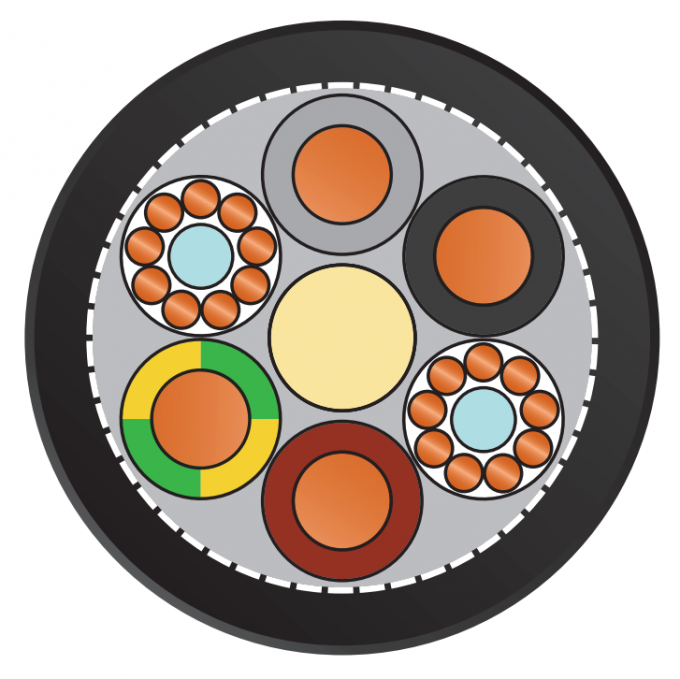

Key Specifications of NSHTOEU-J Reeling Cable
The NSHTOEU-J cable features a robust 0.6/1kV voltage rating, making it suitable for medium-voltage applications in port machinery. This 0.6/1kV heavy-duty marine cable incorporates advanced construction techniques specifically engineered for reeling applications where cables experience continuous flexing, torsion, and mechanical stress.
The cable structure consists of fine stranded copper conductors that provide exceptional flexibility while maintaining excellent electrical conductivity. The copper stranding follows Class 5 or Class 6 specifications, ensuring optimal performance in dynamic applications. Each conductor is individually insulated with ethylene propylene rubber (EPR), which offers superior electrical properties and resistance to thermal aging. The EPR insulation maintains its flexibility across the entire operating temperature range, crucial for maintaining cable integrity during extreme weather conditions.
The outer sheath utilizes a specialized rubber compound that provides exceptional resistance to environmental factors commonly encountered in port operations. This rubber insulated cable for bucket wheel excavator applications features a sandwich double sheath construction that enhances mechanical protection while maintaining flexibility. The outer sheath is formulated to resist oil, ozone, ultraviolet radiation, and salt water exposure, ensuring long-term reliability in marine environments.
Temperature performance represents a critical specification for port applications, where equipment must operate reliably across seasonal variations and different geographical locations. The NSHTOEU-J cable operates effectively in ambient temperatures ranging from -40°C to +90°C, with conductor operating temperatures up to +90°C under normal conditions. This wide temperature range ensures reliable operation in Arctic ports during winter months and tropical facilities during peak summer conditions.
The cable incorporates halogen-free materials throughout its construction, eliminating the production of toxic gases during combustion. This safety feature is particularly important in enclosed spaces and areas where personnel may be exposed to cable emissions. Additionally, the cable meets flame-retardant requirements according to IEC 60332-1, providing an additional layer of safety in industrial environments.
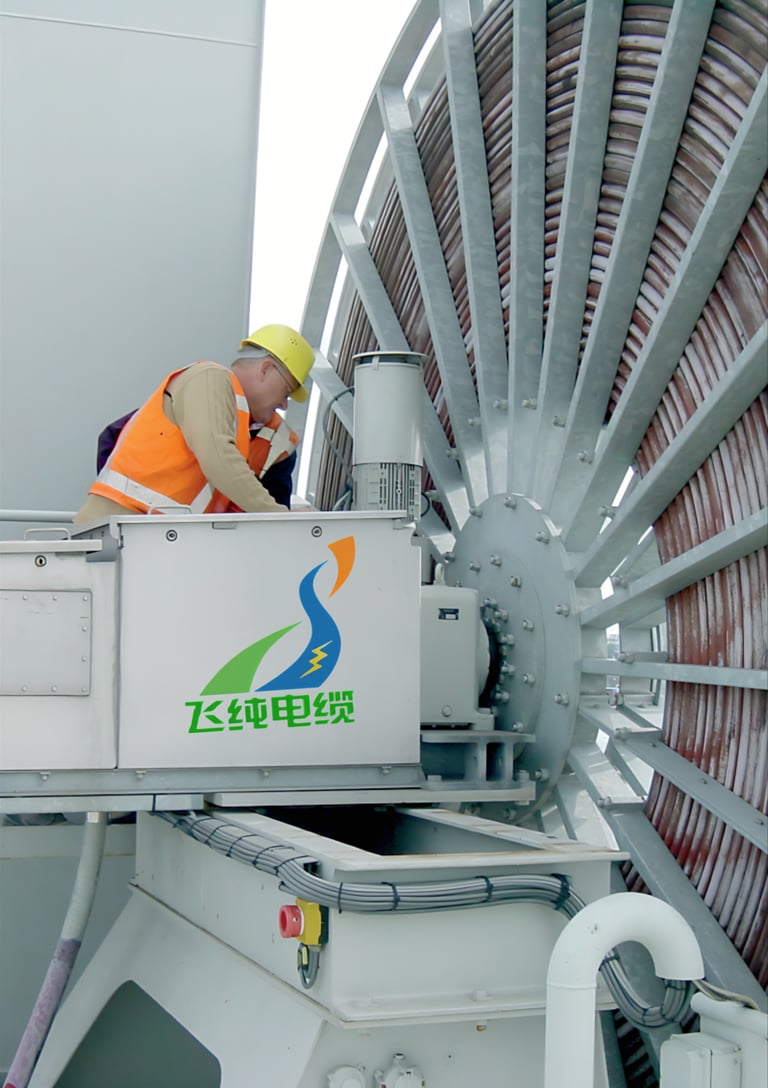

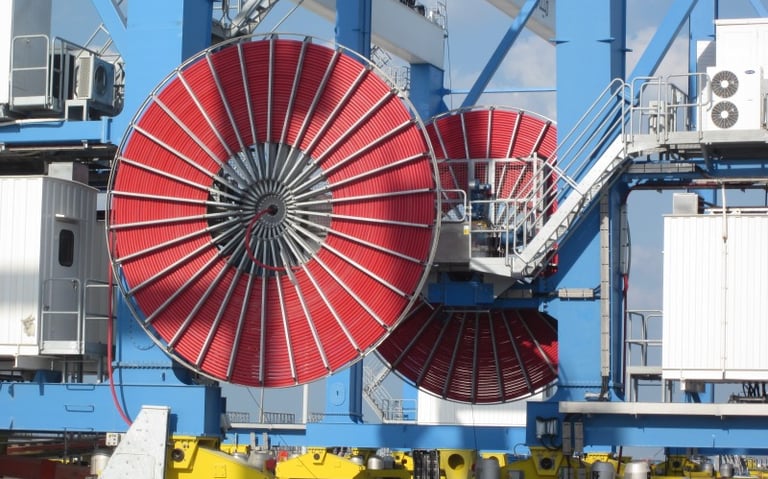

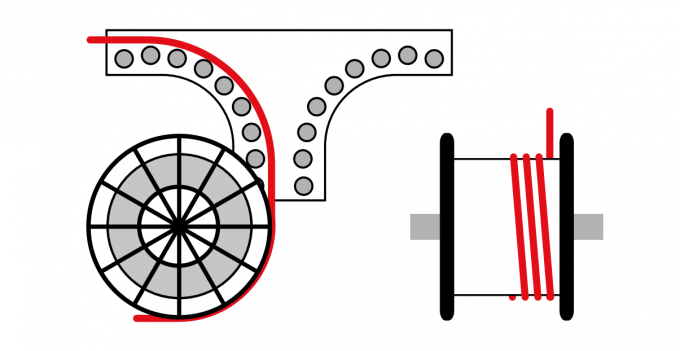

Compliance and Standards
The NSHTOEU-J cable achieves VDE 0250-814 compliance, representing one of the most stringent standards for reeling cables in industrial applications. This VDE 0250 port crane cable certification ensures that the product meets rigorous testing requirements for mechanical performance, electrical characteristics, and environmental resistance.
VDE 0250-814 specifically addresses reeling cables used in applications involving continuous movement, making it the ideal standard for port machinery applications. The standard encompasses comprehensive testing procedures including torsion testing, bending radius verification, and long-term mechanical stress evaluation. Cables meeting this standard demonstrate proven performance in demanding industrial environments where traditional cables typically fail.
In addition to VDE certification, the NSHTOEU-J cable maintains CE marking and RoHS conformity, ensuring compliance with European safety and environmental regulations. The CE marking indicates conformity with health, safety, and environmental protection standards within the European Economic Area, while RoHS compliance ensures the restriction of hazardous substances in electrical equipment.
The cable also meets relevant DIN EN and IEC reeling cable requirements, providing additional assurance of quality and performance. These international standards ensure compatibility with equipment manufactured globally and provide confidence in long-term reliability. The multi-standard compliance approach reflects the manufacturer's commitment to producing cables that meet the highest international quality benchmarks.

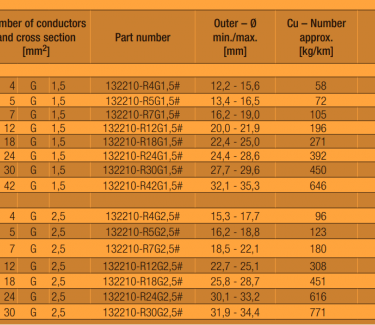

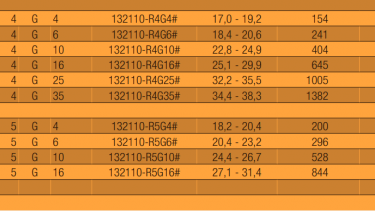
Mechanical & Electrical Performance in Port Environments
Port applications subject cables to unique mechanical stresses that distinguish them from stationary industrial installations. The NSHTOEU-J cable demonstrates exceptional torsion and tensile resistance in dynamic cable reels, where cables experience continuous winding, unwinding, and lateral movement. The cable's construction incorporates design elements specifically engineered to withstand these mechanical challenges while maintaining electrical integrity.
The high mechanical strength required for moving applications stems from the cable's specialized conductor stranding and sheath design. Fine copper stranding reduces individual wire stress during flexing, while the rubber sheath provides cushioning against external mechanical forces. This cable for dynamic reeling systems in ports can handle travel speeds up to 120 meters per minute, accommodating the rapid movement requirements of modern port machinery.
Performance in wet, salty, and abrasive environments represents a critical consideration for port applications. The NSHTOEU-J cable's outer sheath incorporates compounds specifically formulated to resist salt water corrosion, a primary cause of cable degradation in marine environments. The UV-resistant port cable properties prevent degradation from prolonged sun exposure, while oil resistance protects against hydraulic fluid contamination common in heavy machinery applications.
Electrical performance remains consistent throughout the cable's operating range, with insulation resistance maintained even under adverse environmental conditions. The EPR insulation system provides excellent dielectric properties, ensuring reliable power transmission while minimizing electrical losses. This high-flexibility cable for port terminals maintains its electrical characteristics throughout millions of flexing cycles, providing long-term reliability in demanding applications.
Application Scenarios in Port Operations
The versatility of the NSHTOEU-J cable makes it suitable for a wide range of port equipment applications. Bucket wheel excavators represent one of the most demanding applications, where cables must withstand continuous rotation, translation, and elevation movements while maintaining reliable power transmission. These massive machines require cables that can handle both the electrical loads of drive motors and the mechanical stresses of constant movement.
Stackers and reclaimers present unique challenges due to their long travel distances and high positioning accuracy requirements. The shiploader rubber round cable design accommodates the extended cable lengths required for these applications while maintaining mechanical integrity throughout the entire travel range. The cable's construction prevents twist accumulation during long travel cycles, ensuring consistent performance across the entire operating envelope.
Shiploaders and unloaders operate in some of the most challenging port environments, with direct exposure to weather, cargo dust, and mechanical impact. The NSHTOEU-J cable's robust construction withstands these conditions while providing reliable power to conveyor systems, positioning drives, and control circuits. The cable's flexibility allows for complex routing around ship structures and cargo handling equipment.
Container terminals and shipyards utilize the cable in various crane applications, where precise load positioning and high reliability are essential. The cable's performance characteristics make it suitable for quay cranes, rail-mounted gantry cranes, and rubber-tired gantry cranes commonly found in modern container facilities. The ability to handle high mechanical loads while maintaining electrical integrity makes it ideal for these applications.

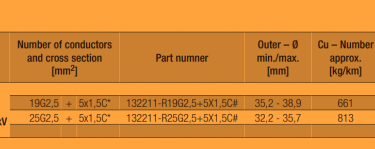
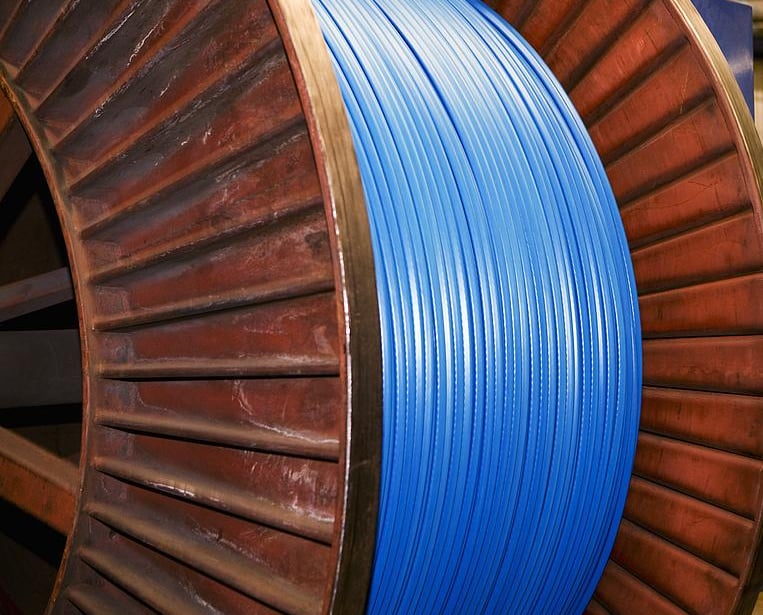

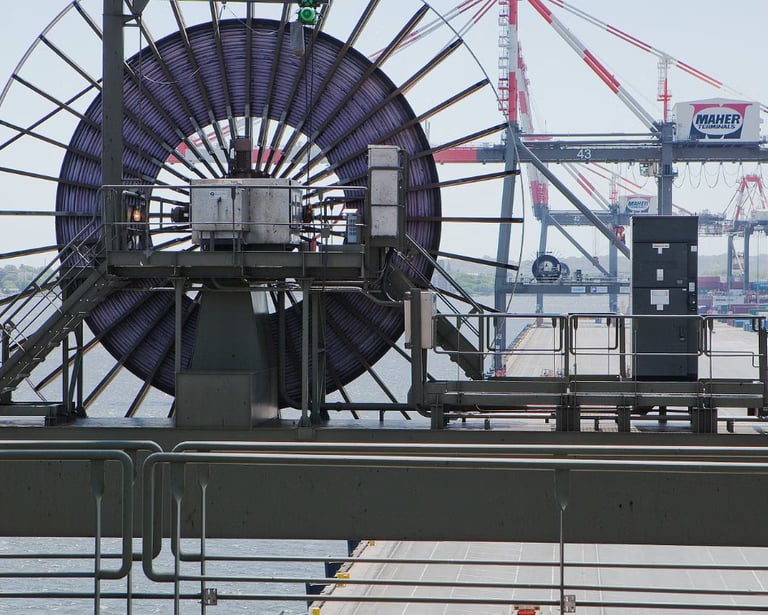

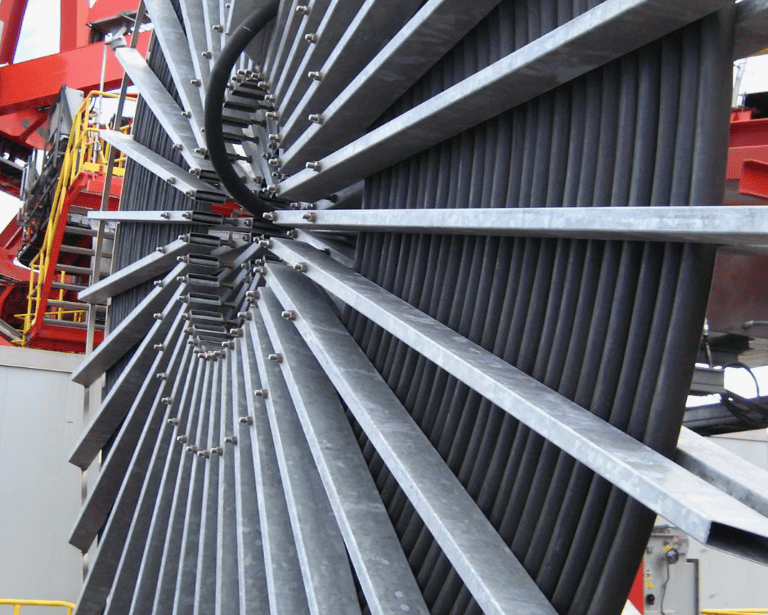

Advantages of Using NSHTOEU-J in Ports
The implementation of NSHTOEU-J cables in port operations provides significant operational advantages that translate directly to improved productivity and reduced costs. Reduced downtime due to high fatigue resistance represents the primary benefit, as the cable's specialized construction minimizes premature failures that plague conventional cables in reeling applications.
The heavy-duty cable for stacker reclaimer applications demonstrates exceptional longevity, with service life typically exceeding conventional cables by 200-300%. This extended operational life results from the cable's resistance to the primary failure modes encountered in port environments: mechanical fatigue, environmental degradation, and electrical breakdown. The specialized rubber compounds and construction techniques specifically address these failure mechanisms.
Long service life and low maintenance requirements significantly reduce total cost of ownership for port operators. The cable's construction minimizes the need for frequent inspections and replacements, allowing maintenance teams to focus on other critical equipment. The reduced maintenance burden is particularly valuable in port operations where equipment availability directly impacts throughput and profitability.
The cable's suitability for harsh outdoor environments and continuous reeling makes it ideal for unmanned operations common in modern automated ports. The reliable performance reduces the need for manual intervention and emergency repairs, supporting the trend toward autonomous port operations. This reliability becomes increasingly important as ports implement 24/7 automated systems.
Comparison with Other Port Crane Cables
Understanding how the NSHTOEU-J differs from other cable types helps port operators select the optimal solution for specific applications. Compared to TROMMELFLEX cables, the NSHTOEU-J offers superior environmental resistance and wider temperature operating range. While TROMMELFLEX cables excel in indoor applications with controlled environments, the NSHTOEU-J provides better performance in outdoor marine environments.
TSCGEWOEU cables represent another alternative, but typically offer lower mechanical strength and reduced environmental resistance compared to the NSHTOEU-J. The specialized rubber compound used in NSHTOEU-J construction provides superior resistance to salt water, UV radiation, and oil contamination commonly encountered in port environments.
The VDE certified cable for shiploader applications represents a specialized category where the NSHTOEU-J excels due to its comprehensive standards compliance and proven performance record. Many alternative cables lack the rigorous testing and certification required for the most demanding port applications.
Best use-cases for NSHTOEU-J include applications involving continuous movement, harsh environmental exposure, and high reliability requirements. The cable proves most advantageous in outdoor applications where environmental factors significantly impact cable longevity and performance.
Installation and Technical Considerations
Proper installation techniques are crucial for maximizing the performance and longevity of NSHTOEU-J cables in port applications. The cable's minimum bending radius requirements must be strictly observed to prevent internal damage during installation and operation. The recommended bending radius varies with cable diameter but typically ranges from 15-20 times the cable's outer diameter for dynamic applications.
Cable reel design plays a critical role in cable performance, with proper groove dimensions and surface finish essential for preventing mechanical damage. The reel drum diameter should be sized appropriately for the cable diameter and application requirements, with larger drums generally providing longer cable life in high-cycle applications.
Proper cable termination techniques ensure reliable electrical connections while maintaining mechanical integrity. The use of appropriate strain relief and environmental protection at termination points prevents premature failure due to moisture ingress or mechanical stress concentration.
Conclusion & Ordering Information
The NSHTOEU-J 0.6/1kV rubber reeling cable represents the optimal solution for demanding port applications requiring reliable power transmission under challenging conditions. Its combination of mechanical strength, environmental resistance, and electrical performance makes it the preferred choice for bucket wheel excavators, stackers, reclaimers, and shiploaders operating in marine environments.
The cable's VDE 0250 certification, wide temperature operating range, and proven track record in port applications provide confidence in long-term reliability and performance. The investment in quality reeling cable pays dividends through reduced downtime, lower maintenance costs, and improved operational efficiency.
Custom cable configurations are available to meet specific application requirements, including special conductor arrangements, modified sheath compounds, and non-standard lengths. Export support and technical assistance ensure successful implementation in ports worldwide, with comprehensive documentation and local support available.
For technical datasheets, pricing information, and application-specific recommendations, qualified engineers are available to assist with cable selection and specification development. The commitment to quality and customer support ensures successful implementation of NSHTOEU-J cables in the most demanding port applications.
Frequently Asked Questions (FAQ)
Q1: What are the main applications of the Type NSHTOEU-J cable? A1: The NSHTOEU-J cable is specifically designed for demanding port applications including stackers, reclaimers, shiploaders, bucket wheel excavators, and material handling machines operating in harsh chemical and marine environments. It excels in applications requiring continuous reeling and unreeling operations.
Q2: What is the rated voltage for this cable and what does it mean for port applications? A2: The rated voltage is 0.6/1.0 kV (Uo/U), making it suitable for medium-voltage applications in port machinery. This voltage rating provides adequate safety margins for typical port equipment power requirements while maintaining compact cable dimensions.
Q3: How does the NSHTOEU-J cable handle high mechanical stresses in reeling applications? A3: The cable features a robust sandwich double sheath construction and fine-stranded copper conductors specifically designed for high mechanical stress applications. It can withstand continuous flexing, torsion, and tensile forces encountered in dynamic reeling systems while maintaining electrical integrity.
Q4: What are the thermal specifications and why are they important for port operations? A4: The cable operates in ambient temperatures from -40°C to +90°C, with maximum conductor operating temperature of +90°C and short-circuit temperature of +250°C. This wide temperature range ensures reliable operation in diverse climate conditions from Arctic to tropical ports.
Q5: Is this cable resistant to marine environmental conditions? A5: Yes, the cable provides excellent resistance to ozone, oil, UV radiation, and salt water exposure. It is flame-retardant according to IEC 60332-1 and features halogen-free construction, making it ideal for harsh marine environments where traditional cables often fail prematurely.
Q6: What is the maximum travel speed this cable can handle in reeling applications? A6: The NSHTOEU-J cable can accommodate travel speeds up to 120 meters per minute, suitable for the rapid movement requirements of modern port machinery including high-speed crane operations and bulk material handling equipment.
Q7: How does VDE 0250-814 certification benefit port operators? A7: VDE 0250-814 certification ensures the cable meets rigorous testing requirements for mechanical performance, electrical characteristics, and environmental resistance specifically for reeling applications. This certification provides confidence in long-term reliability and reduces the risk of premature cable failure in demanding port operations.
Q8: What makes NSHTOEU-J superior to conventional port cables? A8: The NSHTOEU-J offers superior mechanical fatigue resistance, wider temperature operating range, better environmental resistance, and longer service life compared to conventional cables. Its specialized construction addresses the primary failure modes encountered in port environments, resulting in reduced downtime and maintenance costs.
How to Reach Us
Get in Touch
SiteMap
Product Catalogue
Reeling Cable
Festoon Cable
Shore Power Cable




Scan to add us on WeChat
